The Eclectic Hornbill Festival – Images and Information
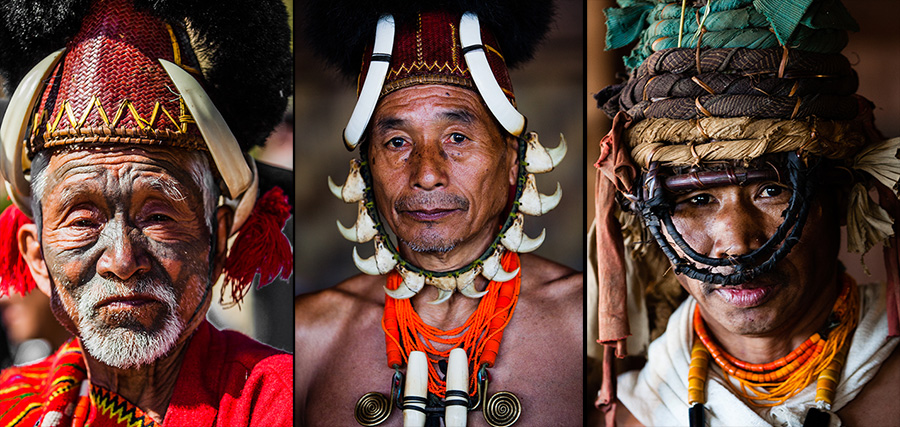
On a cold December morning, every road in Nagaland seems to be leading to the Hornbill Festival venue. Large signboards, usually adorned with portraits of Naga people clad in their beautiful best traditional wears, welcome you to the ‘Festival of Festivals’. They are compellingly beautiful images – seeing one of them in a newspaper or a magazine will compel you to pack the bags and catch the next flight available.
The Hornbill Festival is a celebration of Nagaland’s traditions and cultural heritage. Sixteen communities–collectively called Nagas–come together at the festival venue to exhibit their wears, enact their daily life and re-create their energetic festivals at one place. Imagine spend a year travelling through rural Nagaland, witnessing their way of life and celebrations, and then think about bringing it all together in one-go. That’s hornbill festival for you.
Here is a collection of images from Hornbill Festival – celebrations, performances and portraitures, made in the last two years of leading photography tours to the festival.

The festival venue–called Kisama Heritage Village–just outside Kohima. The venue is far larger than just an amphitheater for performances. Surrounding the amphitheater are the resting places of the participating communities, restaurants, shops, museums and community areas.

A performance in progress. Seated behind the performers are people from other participating Naga communities. The festival sees a large number of people performing over its ten days length. When the performances are in progress, other participants, attired in their traditional best, sit together in designated places to watch all the action.

One of the participants with other members of her community, watching a performance.
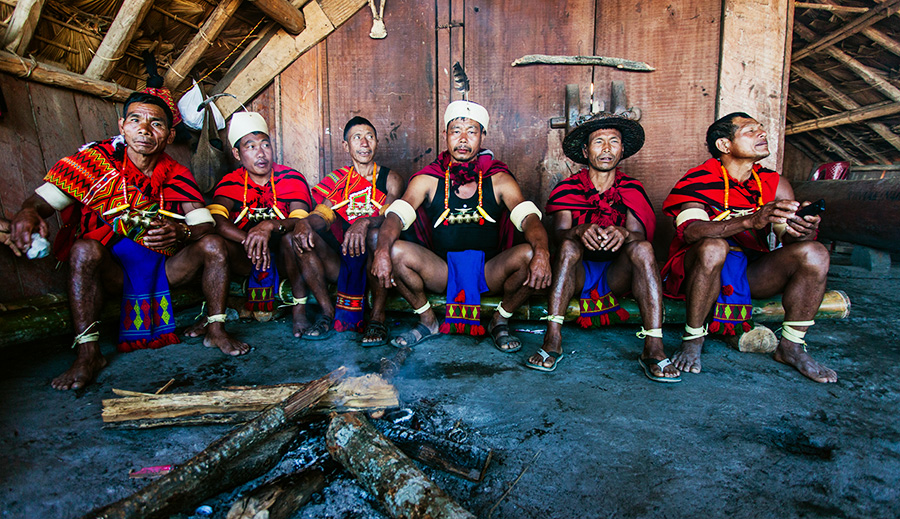
Between performances, participants rest in designated spaces for each community, called Morungs. Traditionally, in several Naga communities, a Morung is a dormitory located in each village. Boys coming of age stay in the Morung and learn the way of life and acquire skills from a mentor. You can still see remnants of Morungs–usually a small hut with an outdoor kitchen–in several villages, although the system is no longer in practice.
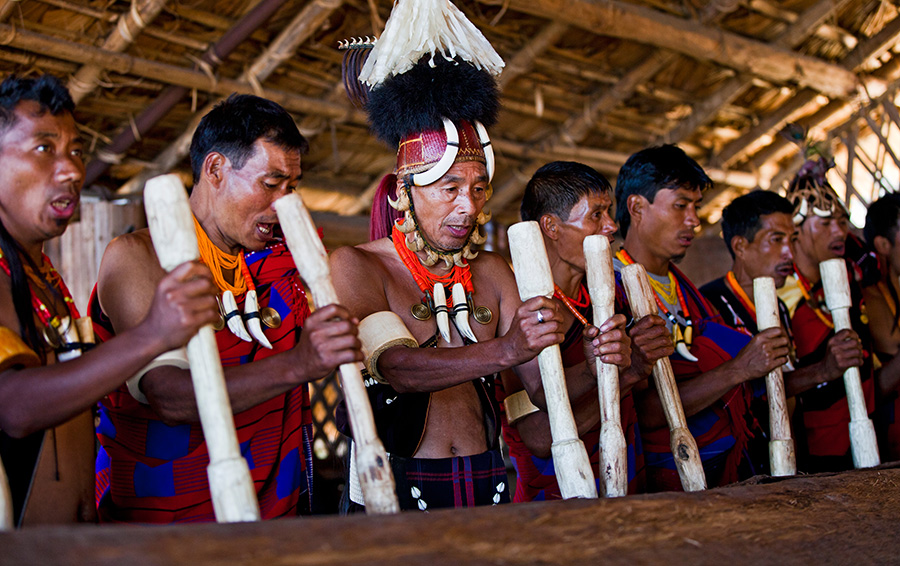
On some occasions between performances, you may here the sound of heavy pounding in some of the Morungs. Most likely, this is the sound of beating log-drums. A log drums is a huge tree-trunk with its core emptied. They are seen in almost every Naga village and is usually located in a Morung or the center of the village. Traditionally, log-drums are beaten to gather the attention of the village, which could be about an occasion such as birth or death or even to warn everyone about an enemy attack.
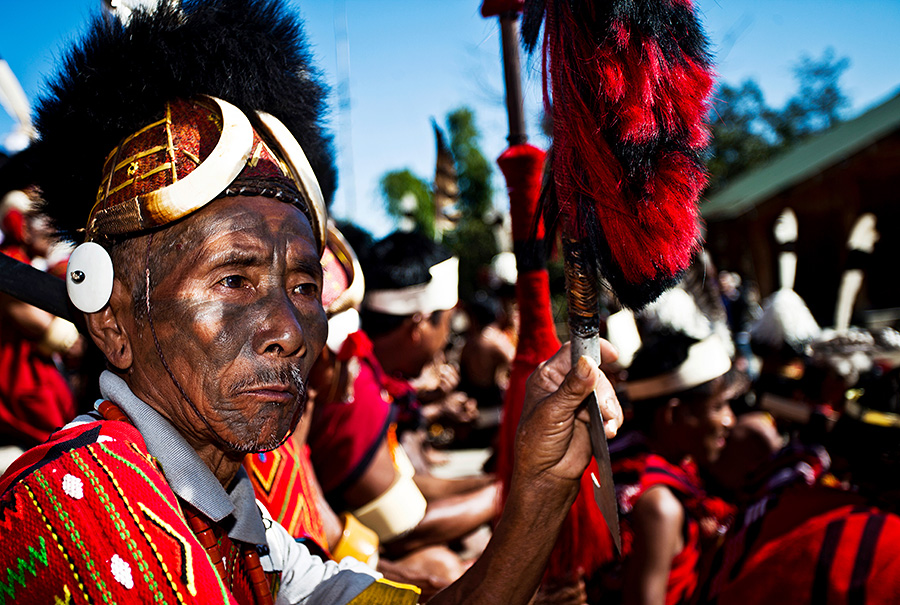
A man belonging to Konyak Community, seated with his fellows at the performance venue. The tattoos on his face indicate that he was once a successful head-hunter. Several Naga tribes practiced head-hunting as a tradition until a ban was put in place in early 20th century, although the last recorded headhunting occurred as recently as the 1960s. Tattoos were a reward celebrating a successful head-hunting in Konyak people. A few head-hunters from the past can still survive. Although several Naga communities practiced head-hunting, it is particularly well-known in Konyaks, thanks to their practice of awarding face-tattoos.

Portraits of participants belonging to different Naga communities in their traditional attire.

A performance in progress at the festival arena.
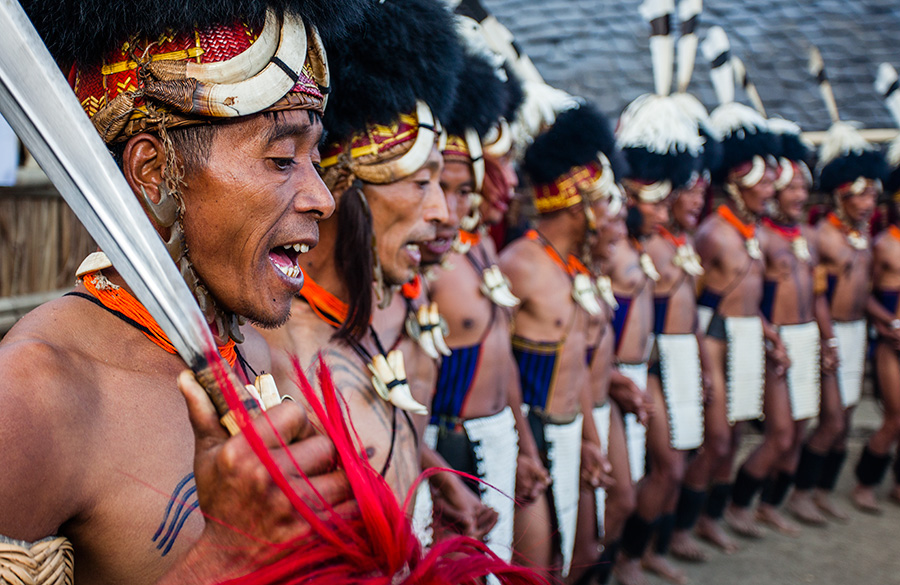
Besides the area, some performances and ritual-enactments are also done at the Morungs, which allows an up-close look these activities.
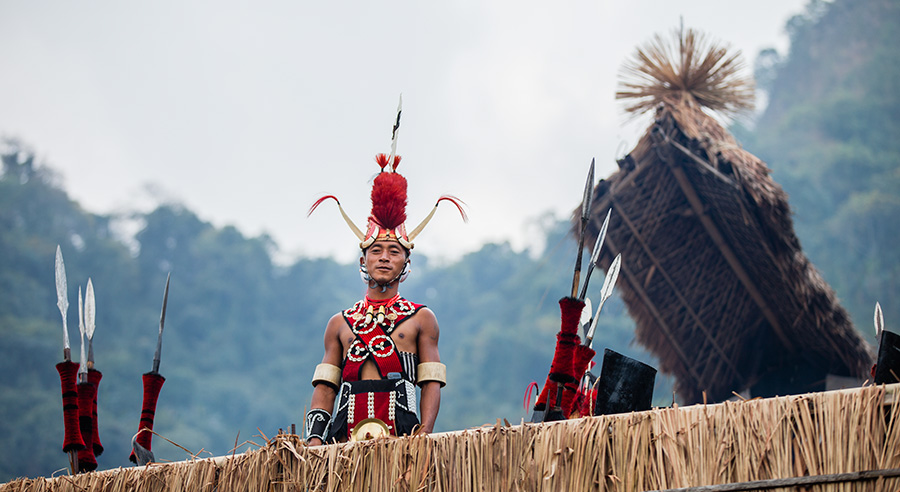
A Naga man looks down from his Morung.
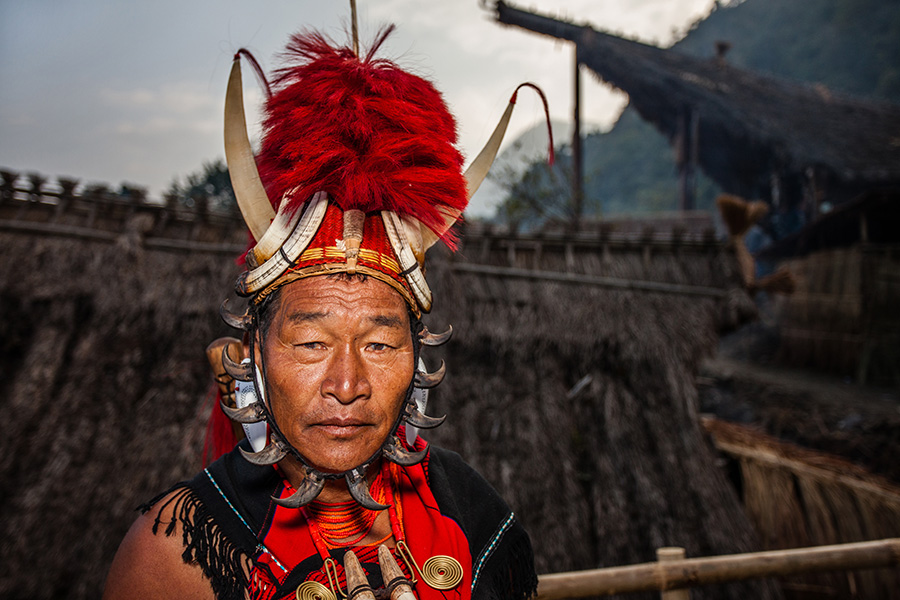
A portrait of a Yimchunger Naga man at the hornbill festival venue.
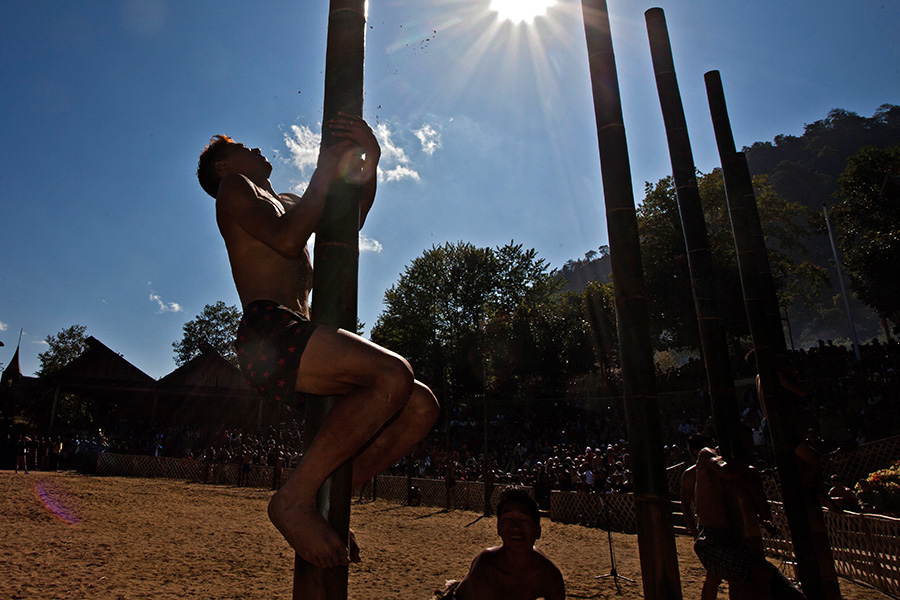
Besides performances, the festival also hosts several entertaining competitions including bamboo pole climbing. The climb is made harder by lacing the pole heavily with pork fat. Participants are allowed to minimize the effect of grease by throwing sand on the poles, but it doesn’t help much. It takes a lot of unsuccessful attempts before someone manages to get on the top. A few other competitions include a Naga version of high-jump that involves kicking a high-hanging piece of meat with both legs, and eating bhoot-jolokia (ghost-chillies or king-chillies). Bhoot-Jolokia are known as the world’s hottest chillies.
Hornbill Festival Information – Things you should know
Hornbill Festival is scheduled from December 1 to 10 every year. Sixteen different communities inhabiting Nagaland come together during the festival to present a glimpse of their cultural heritage, enact their way of life and recreate their festivities. The festival is held at a specially created venue outside the city of Kohima, called Kisama Heritage Village.
The festival is not just about cultural performances: it’s a great place to get insights to about all things Nagaland. At the festival venue, you can taste Naga food, witness or be part of some competitions, see museums that give you insights into the part played by Nagaland during the second world war, see images or participate in a photography competition and of course buy Naga souvenirs.
When performances are not in progress, you can visit the Morungs to meet the Naga people adorned in their best traditional clothes and even watch some performances that happen at the Morung from up-close.
Although the festival lasts for ten days, most visitors prefer to be at the festival venue for two to three days.
Having been to Kohima, it is also worthwhile taking time to visit a few places nearby. Visiting local villages – Kigwema (close to the festival venue) and Khonoma (one hour drive) can give you a glimpse of everyday life in the villages of Nagaland. These villages are inhabited by Angami Naga people.
Another popular sight of Kohima is a war cemetery built in memory of Indian and British soldiers who fought the Japanese.
A night-market opens us in Kohima during the days when Hornbill Festival is in progress. This is a busy road where Naga people setup food-stall along the length of a road.
Accommodation can be hard to get and frightfully expensive during the days of the festival. Ensure that you book well in advance. Kohima has a range of accommodation from basic guest-houses to three-star hotels. You can also find a few guesthouses that open-up to visitors in nearby Kigwema Village.
Also see my photography tour – Photography in North-East India and Hornbill Festival